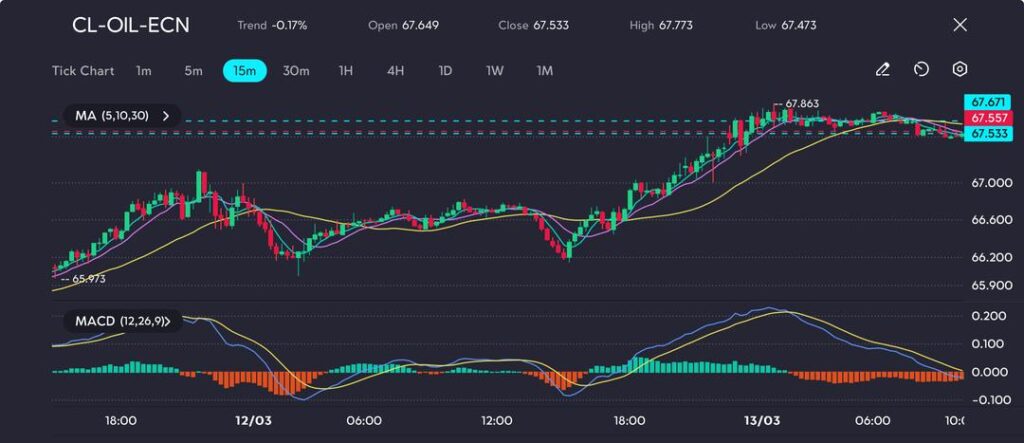
Oil prices dipped as traders weighed stronger demand prospects against concerns over trade tensions and rising supply. While fuel consumption remains solid, uncertainty surrounding tariffs and OPEC+ production is keeping the market on edge. Investors are closely monitoring geopolitical risks, production trends, and economic signals that could influence the next move in oil prices.
Oil prices edged lower on Thursday, reversing part of the previous session’s gains as investors balanced escalating trade tensions against expectations of stronger seasonal demand.
West Texas Intermediate (WTI) crude futures settled at USD 67.53, down 0.17%, after briefly reaching USD 67.77 earlier in the session. Brent crude followed a similar pattern, dipping 0.1% to USD 70.88 per barrel.
The decline comes after a 2% rally on Wednesday, driven by unexpectedly tight US oil and fuel inventories.
The Energy Information Administration (EIA) reported a 5.7 million-barrel drop in US gasoline stockpiles—far exceeding analysts’ forecasts of a 1.9 million-barrel draw.
Meanwhile, US crude inventories rose by 1.4 million barrels, a smaller-than-expected increase that signals steady demand.
Despite the price dip, global economic uncertainty remains a dominant theme.
US President Donald Trump’s latest tariff threats on European Union goods, along with Canada and Mexico preparing retaliatory measures, have added to investor concerns.
Traders fear that prolonged trade disputes could slow global economic growth, potentially reducing energy demand.
Meanwhile, the market is closely monitoring OPEC+ production levels. The latest data indicates an increase of 363,000 barrels per day in February, largely due to higher output from Kazakhstan.
While OPEC has maintained its global demand growth forecast for 2025, traders remain cautious about potential supply-side pressures.
Crude oil (CL-OIL) is currently trading at USD 67.53, reflecting a 0.17% decline.
The session high of USD 67.77 encountered resistance near USD 67.86, leading to consolidation.

Short-term moving averages (5, 10, 30 periods) suggest an overall uptrend, but signs of exhaustion are emerging.
The MACD remains positive, though a slight loss of momentum hints at a possible retracement.
Short-term volatility is likely to persist, with tariff developments, OPEC+ decisions, and economic data releases serving as major catalysts.
The sharp drop in US gasoline inventories indicates robust seasonal demand, which could cushion further losses.
However, any escalation in trade disputes or a rise in OPEC+ output may cap the upside potential for oil prices.
Click here to open account and start trading.